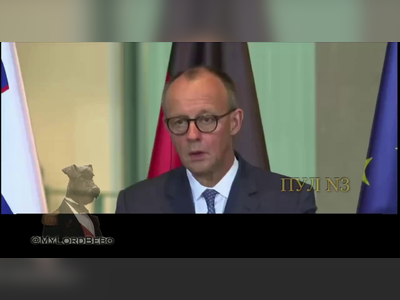
Challenges Facing the Pharmacist Profession Amidst Low Wages and Declining Enrollment
Italy experiences a shortage of pharmacists due to decreased interest and insufficient salaries, impacting the healthcare sector's future.
The profession of pharmacy, traditionally respected and sought after in small towns and rural areas, has seen a significant decline in desirability.
Recent statistics from Federfarma, based on AlmaLaurea data, indicate a concerning trend: the number of pharmacy graduates has decreased from 5,095 in 2017 to just over 4,000 today.
This trend is symptomatic of a broader crisis affecting healthcare professions, including pharmacists, who are increasingly difficult to recruit.
Federfarma reports that there are currently 99,000 pharmacists in Italy, with an average age of 41. Among them, 75,000 are employees, and 57,000 are collaborator pharmacists, not owning their pharmacy.
The profession attracts a predominantly female workforce, accounting for 79% of pharmacists.
Andrea Mandelli, president of the Federazione degli Ordini dei Farmacisti Italiani (FOFI), highlights a structural shortage of healthcare personnel in Italy, which extends to pharmacists.
Despite a high demand for pharmacists in various sectors, there has been a loss of over 1,000 graduates, approximately a 20% decline over five years.
This is taking place despite the increased role pharmacists have played, especially during the COVID-19 pandemic, where they became central figures in community health.
Several factors contribute to the declining number of pharmacy graduates, including career prospects and remuneration.
While the liberalization of the pharmacy sector and the rise of national and international chains have provided new career opportunities, remuneration remains a concern.
Federfarma's data reveals that pharmacy graduates earn a net monthly salary of €1,399 a year after graduating, rising to €1,639 after five years, with a 90.3% employment rate.
Italy boasts one of the densest networks of pharmacies, with over 20,000 establishments, a figure that has grown by 40% since the mid-1970s.
This density positions Italy above the European average, with one pharmacy per 2,938 inhabitants compared to 3,237 elsewhere in Europe.
During the pandemic, pharmacies' roles expanded to include services such as COVID-19 testing and administering vaccines, further solidifying their community presence.
Despite these advancements, there is a noticeable drop in interest among younger generations entering the field.
In response, reforms to the pharmacy degree have incorporated more healthcare-focused elements, aligning with pharmacists' evolving roles in telemedicine and preventative care.
Additionally, companies like Hippocrates Holding are actively working to make the profession more attractive.
Founded in 2018, the group operates over 500 pharmacies across Italy with ambitions to expand further.
They employ 2,500 people, including 2,000 pharmacists.
Such enterprises bring new career opportunities within the sector, aiming for continued growth and a 30-35% higher pharmacy revenue compared to the national average.
As the industry adapts to these challenges, the need for structural changes and renewed investment in the profession becomes ever more pressing to secure its future in Italy’s healthcare landscape.
Recent statistics from Federfarma, based on AlmaLaurea data, indicate a concerning trend: the number of pharmacy graduates has decreased from 5,095 in 2017 to just over 4,000 today.
This trend is symptomatic of a broader crisis affecting healthcare professions, including pharmacists, who are increasingly difficult to recruit.
Federfarma reports that there are currently 99,000 pharmacists in Italy, with an average age of 41. Among them, 75,000 are employees, and 57,000 are collaborator pharmacists, not owning their pharmacy.
The profession attracts a predominantly female workforce, accounting for 79% of pharmacists.
Andrea Mandelli, president of the Federazione degli Ordini dei Farmacisti Italiani (FOFI), highlights a structural shortage of healthcare personnel in Italy, which extends to pharmacists.
Despite a high demand for pharmacists in various sectors, there has been a loss of over 1,000 graduates, approximately a 20% decline over five years.
This is taking place despite the increased role pharmacists have played, especially during the COVID-19 pandemic, where they became central figures in community health.
Several factors contribute to the declining number of pharmacy graduates, including career prospects and remuneration.
While the liberalization of the pharmacy sector and the rise of national and international chains have provided new career opportunities, remuneration remains a concern.
Federfarma's data reveals that pharmacy graduates earn a net monthly salary of €1,399 a year after graduating, rising to €1,639 after five years, with a 90.3% employment rate.
Italy boasts one of the densest networks of pharmacies, with over 20,000 establishments, a figure that has grown by 40% since the mid-1970s.
This density positions Italy above the European average, with one pharmacy per 2,938 inhabitants compared to 3,237 elsewhere in Europe.
During the pandemic, pharmacies' roles expanded to include services such as COVID-19 testing and administering vaccines, further solidifying their community presence.
Despite these advancements, there is a noticeable drop in interest among younger generations entering the field.
In response, reforms to the pharmacy degree have incorporated more healthcare-focused elements, aligning with pharmacists' evolving roles in telemedicine and preventative care.
Additionally, companies like Hippocrates Holding are actively working to make the profession more attractive.
Founded in 2018, the group operates over 500 pharmacies across Italy with ambitions to expand further.
They employ 2,500 people, including 2,000 pharmacists.
Such enterprises bring new career opportunities within the sector, aiming for continued growth and a 30-35% higher pharmacy revenue compared to the national average.
As the industry adapts to these challenges, the need for structural changes and renewed investment in the profession becomes ever more pressing to secure its future in Italy’s healthcare landscape.
Translation:
Translated by AI
AI Disclaimer: An advanced artificial intelligence (AI) system generated the content of this page on its own. This innovative technology conducts extensive research from a variety of reliable sources, performs rigorous fact-checking and verification, cleans up and balances biased or manipulated content, and presents a minimal factual summary that is just enough yet essential for you to function as an informed and educated citizen. Please keep in mind, however, that this system is an evolving technology, and as a result, the article may contain accidental inaccuracies or errors. We urge you to help us improve our site by reporting any inaccuracies you find using the "Contact Us" link at the bottom of this page. Your helpful feedback helps us improve our system and deliver more precise content. When you find an article of interest here, please look for the full and extensive coverage of this topic in traditional news sources, as they are written by professional journalists that we try to support, not replace. We appreciate your understanding and assistance.











